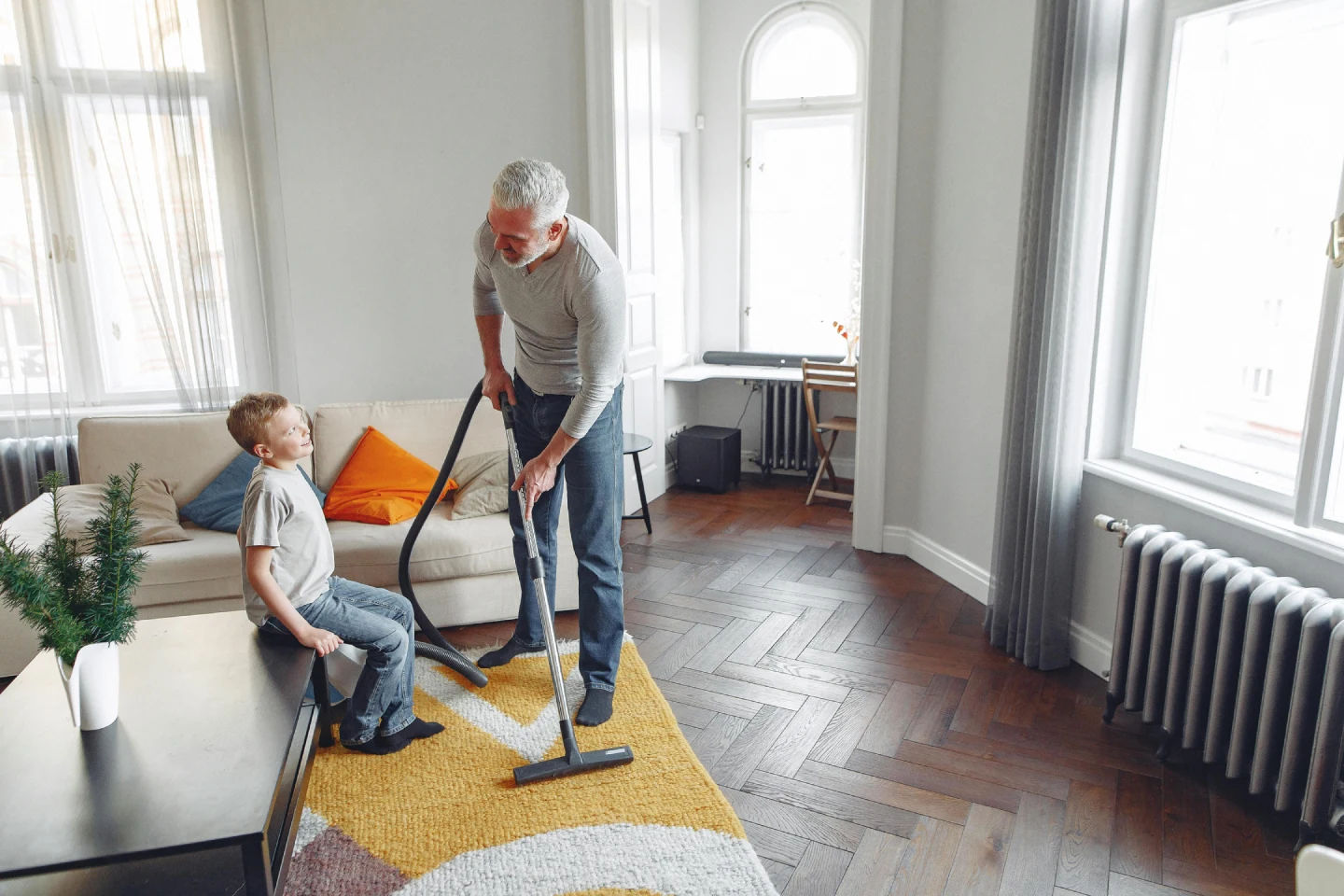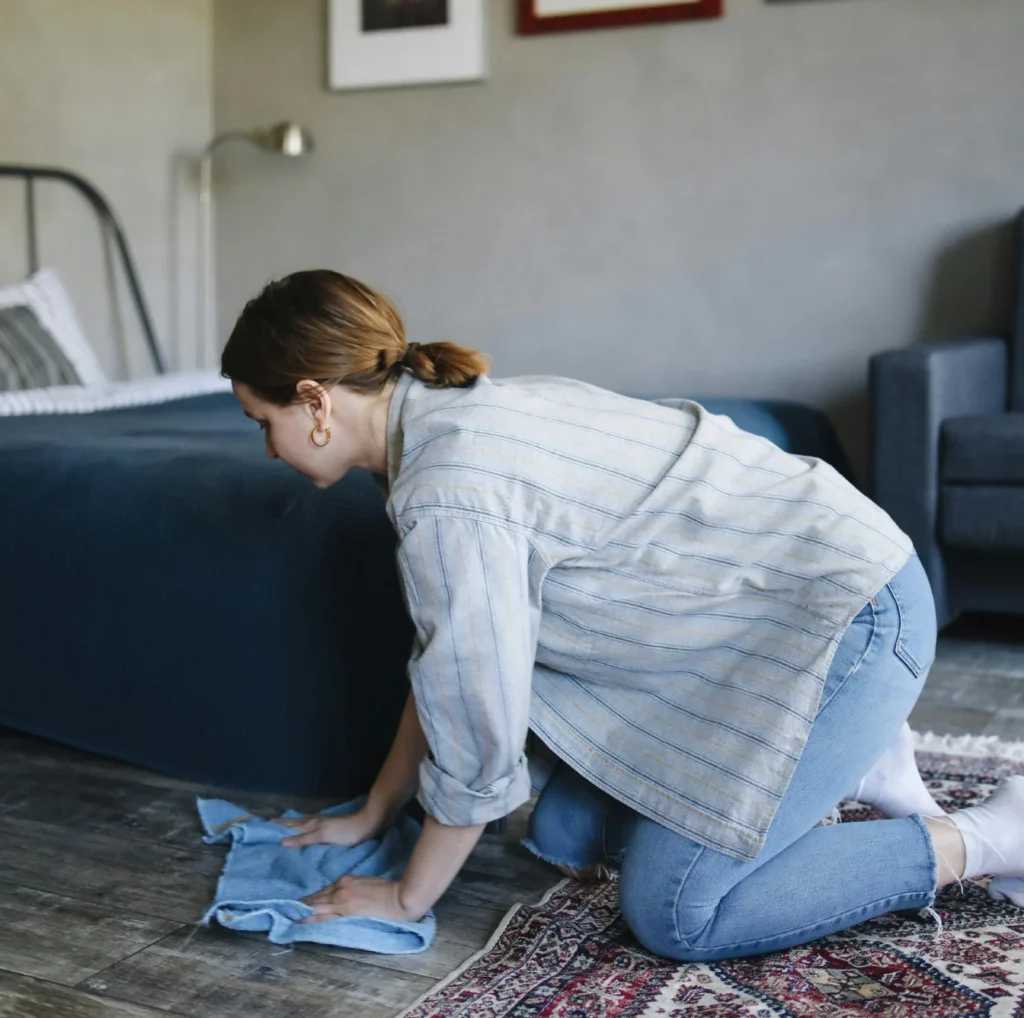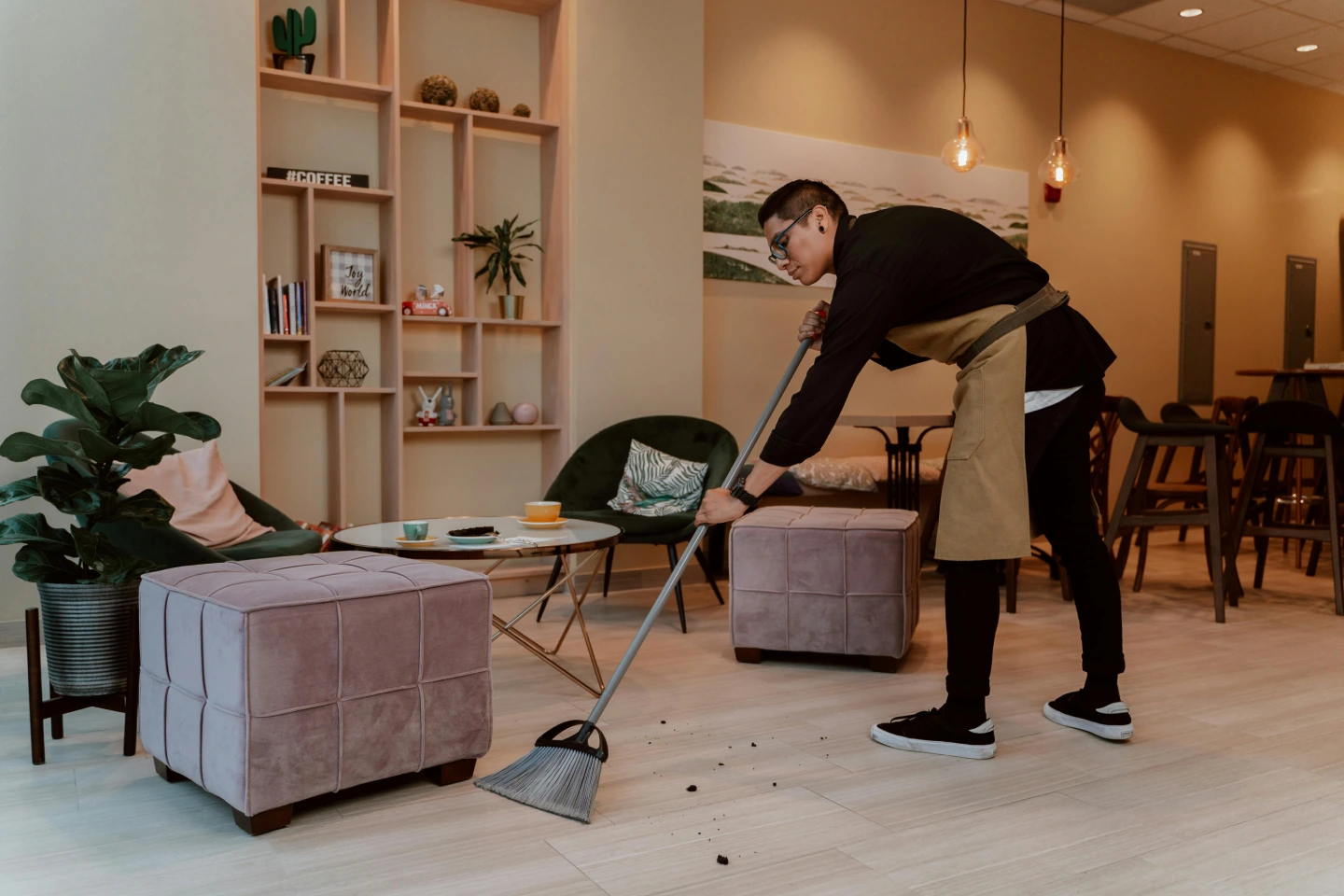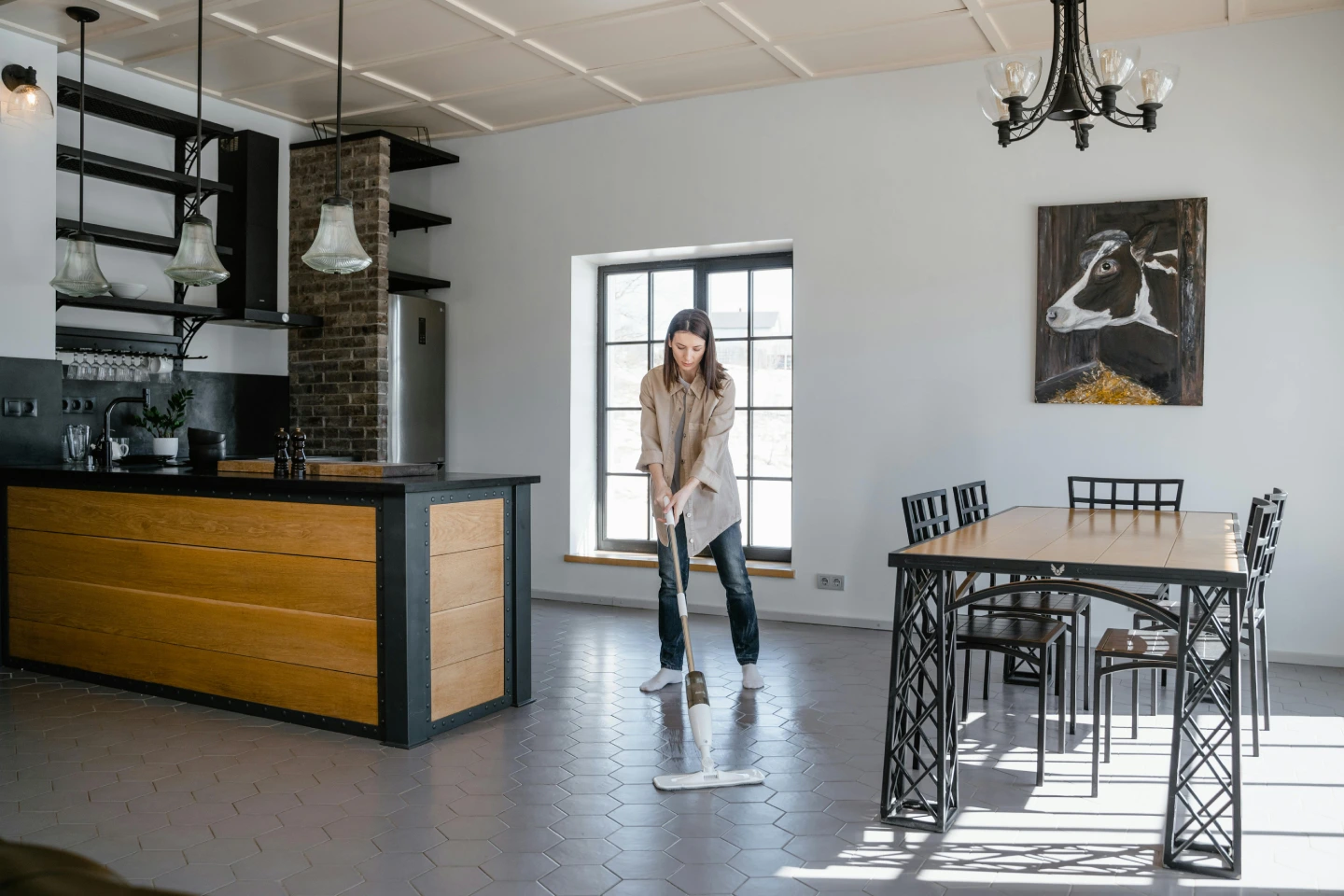How to Clean Each Type of Flooring? (Floor Cleaning Tips)

As one of the most important parts of each house, the floor should look clean and shiny. Flooring has always been expensive, whether you want to buy a new one, install, or maintain it. You should think about what kind of flooring you have and how much your budget is. Why is it so important? First things first, Well-maintained floors last longer, look newer, and save both time and expenses with lower repair and replacement costs. First and foremost, be careful with material-specific care.
Tips to Clean the Floors
Vacuum Regularly: You should dust or vacuum the floor every day since dust adheres to the floor surface, which is really difficult to remove. Remember to vacuum in both directions, including corners and edges.
Mop Dryly: Get into the habit of dry mopping consistently! Scrub the stains out of the floor promptly after it is spilled; don’t let it dry up. Reusable microfiber pads are really helpful for this matter.
Eliminate Moisture: Moisture can change the color of the flooring and damage the sheen of indoor floors. You can prevent further damage by using dry mops and wiping off moisture and spills immediately. Avoid rubbing when cleaning since it just makes the stain worse.
Use Mats & Rugs: One way to remove dust and dirt is to use the right matting for each space in the house. Place rugs and mats around the house to stop furniture from scratching your floor.
Remove Shoes: If you walk in the house with your shoes on, all the outside dirt and debris can come inside through the bottom of your soles. So, remove them every time you set foot on them. But it is recommended not to step inside with shoes or to be bare feet. Instead, wear socks or slippers.
Use Home Remedies: Mix an appropriate amount of white Vinegar, 1/2 cup of bleach, 1/2 cup of rubbing alcohol, and oil or dish soap. Then, apply it onto the floor and dryly mop until the stain is removed.

How to Clean Different Flooring materials?
Different kinds of floorings require different maintenance solutions. Below, you can find different types of floorings and their specific cleaning solutions:
Carpet
One of the best flooring options is carpets. They are soft, warm, and comfortable when walked on; they also avoid slips and falls. Clean carpets even trap pollutants. The first maintaining solution is regular vacuuming. Use a HEPA (Higher Efficiency Particulate Air) filter on the vacuum so that it removes dust more effectively and helps with asthma or allergies. You can also deep clean the carpet with a cleaning machine to get better results. Then, you can add an appropriate amount of carpet stain remover and carpet cleaner using a clean, dry cloth for blotting. The latter one works well with high-traffic areas likely to slip. Carpet protectors are also good options to repel stains and spots.
Hardwood
For decades, hardwood flooring has been popular for its durability, ease of maintenance, and aesthetics. Though cleaning solid hardwood floorings is not as easy as other types, it is not damaged if cleaned regularly. Water has always been the number one enemy of wood, so washing makes it stain over time and damages the finish. So, never use a wet mop unless it is finished with polyurethane. Instead, use a wood-specific liquid cleaner along with a soft bristle broom, a vacuum, and a mop. First, remove dirt by sweeping and vacuuming. Then, apply the cleaner with a microfiber mop to wash the floor. When the cleaning is done, dry the floor immediately using a dry mop. You can also polish it with a wax applicator to make it shine.
Ceramic

It is really easy to clean ceramic or porcelain floorings. They withstand water, so you can wipe them off with a wet string mop to remove stains. For the sheen on the tiles, use a damp mop and scrub a neutral mild cleaner. For the grout lines, regular brushing and dusting is done. You can also use a neutral cleaner scrubbed on the floor; in this way, nothing will stick between floorings. If you don’t want the ceramic to change color, apply sealer. Keep in mind not to use oil-based detergents or soap so as not to dull the finish and leave a greasy surface.
Vinyl
Vinyl has grown in popularity in recent years, mostly for its versatility, water resistance, and aesthetic appeal. The most used ones are vinyl planks and tiles. Clean luxury vinyl flooring with a mild pH-neutral cleaner without water, not an abrasive one, to prevent scratching the surface. Moisture is the number one enemy of vinyl since it lasts long, so wipe it off with a smooth, dry microfiber towel to prevent the flooring from spoiling. Even if you still see the streaks, mop it again using white Vinegar and water. On the other hand, lift furniture rather than dragging them to avoid further damage. You can also place mats to reduce friction.
Marble
To clean this kind of flooring, use a dry dusting pad and a soft mop smeared with hot water and a pH-balanced cleaner for any damage, especially the discoloring of marble. Avoid products containing Vinegar or ammonia, which discolor the surface through chemical reactions. In comparison to other popular flooring material types, marble is vulnerable to moisture and retains dirt easily, so make sure to use a sealing layer to avoid micro-pores. Dust and damp mop the floor delicately on a regular basis.
Concrete
For concrete floors, it is important to use a sealer to prevent moisture, dust, and debris from leaking into the porous surface. If you want to wash the floor, first dust it. Then, wash with a cleaner. To maintain luster, you can also scrub and wax concrete.
Laminate

Laminate floorings are popular for their durability and stylish appearance. Besides, they are affordable and water resistant, and they require little maintenance. To clean this type of flooring, you need vacuums, mops, and floor-specific cleaners, as well as soft brushes. Use the brush to sweep the laminate flooring to remove dirt and debris. Use the damp microfiber mop to wipe off spills or stains. If you want to deep clean the surface, apply cleaners to the floorings.
Remember not to use a steam cleaner or a wet mop since laminate is damaged through prolonged exposure to standing water. Immediately after the floor is stained, use a damp cloth to blot it up. If it is stubborn, such as oil, paint, or marker, use a cloth with a small dab of acetone nail polish remover. Moreover, felt pads should be attached to the legs of the tables and chairs to prevent dents and scratches.
Terrazzo
Clean terrazzo floors with water, pH-neutral cleaners, and a dry mop to keep them in a perfect state. It also should be sealed with terrazzo-specific sealants. In this way, the marble surface above the concrete backing is not damaged, especially in high-traffic areas.
Linoleum

It is as simple as you have ever imagined! You just need to dust or vacuum the floor using a damp mop. There are several floor waxes available in the market that you can apply to linoleum floors. For a perfect shine, polish off the floor every time you clean with a damp cloth.
Tile Floors
For tile floors such as porcelain or ceramic tiles, use warm water and soap or any other tile-specific cleaners. You can also use steam mops since they sanitize the floor without damaging the grout. You should avoid cleaning the tiles with those products, including acids or ammonia, since they might change the floor’s color, leaving streaks of dirt behind.
FAQs
- How often should I clean the floor?
Sweeping and vacuuming should be done on a daily basis if you want them to look new. Mop the floors at least once a week, especially in high-traffic areas such as kitchens. Use floor-specific cleaners and soap for deep cleaning. Apply sealing and polishes when necessary. - How can floors be kept longer?
Scheduled cleaning and using high-quality products are what you need. Protect floors with mats and rugs around the house to avoid debris entering the house. Another effective way is to make the no-shoes law in the house to limit the amount of dirt that is tracked in.



Did you find what you were looking for?